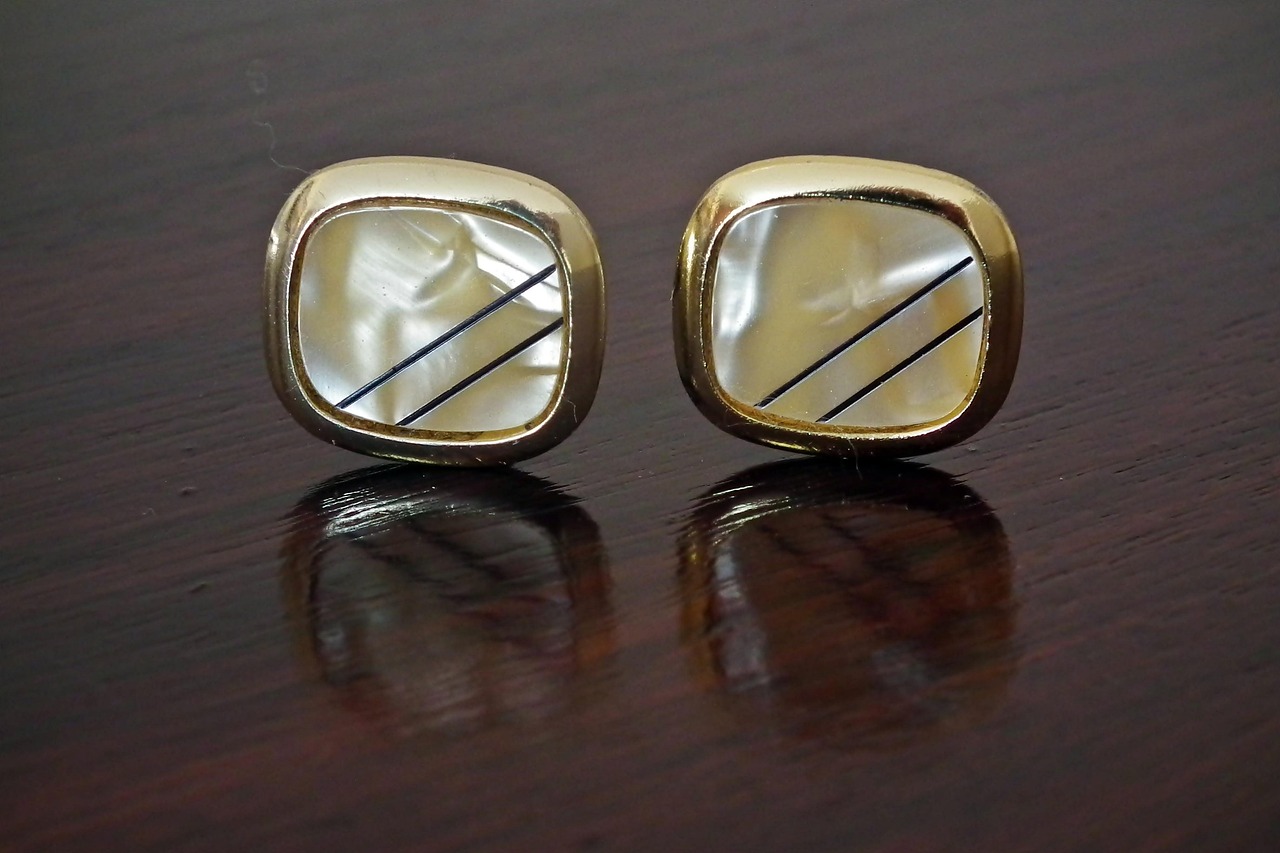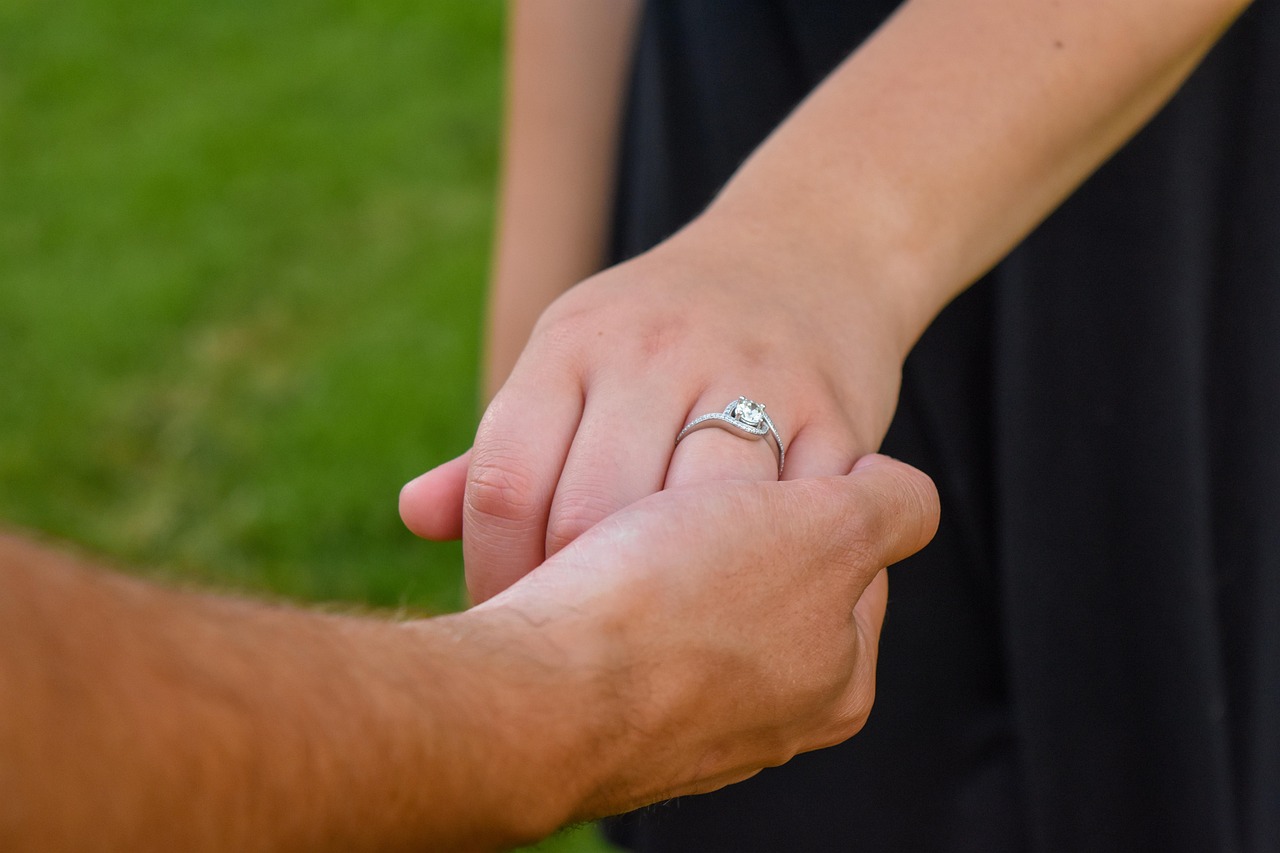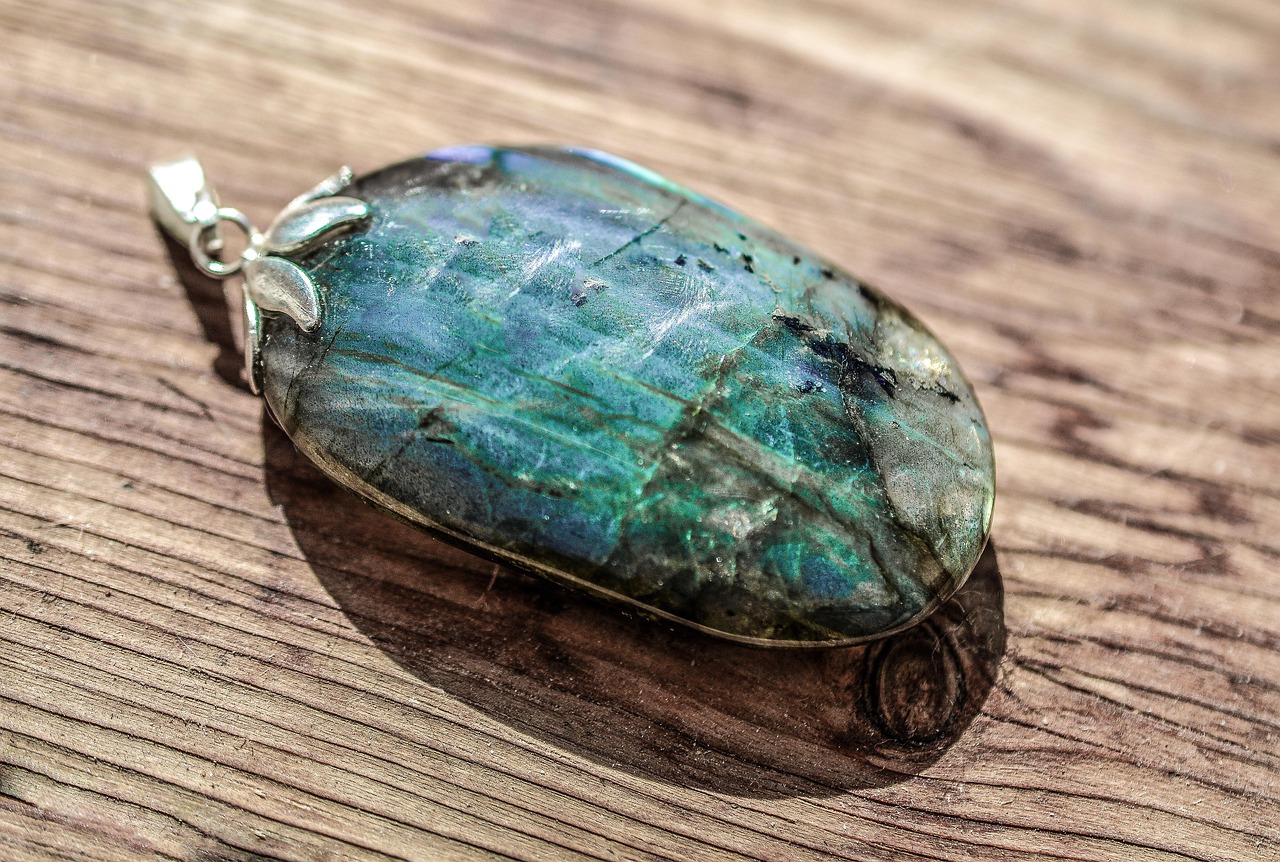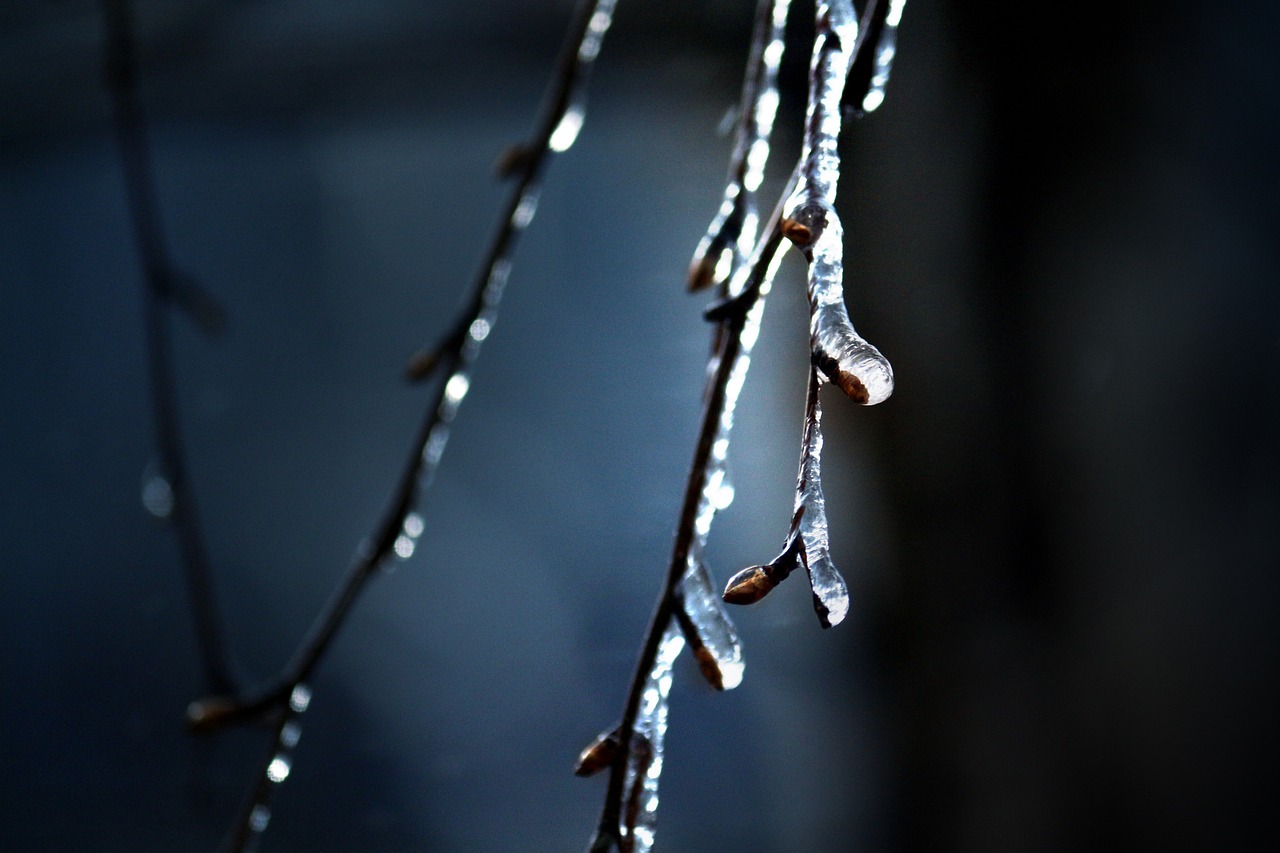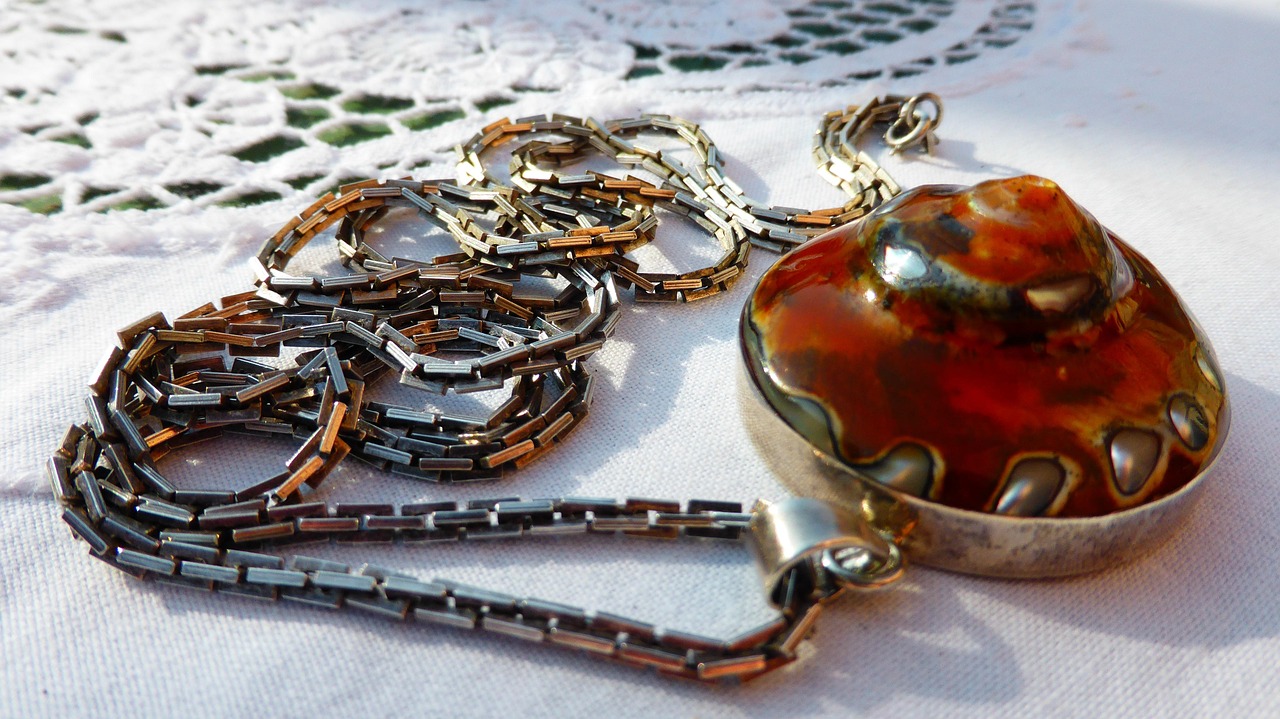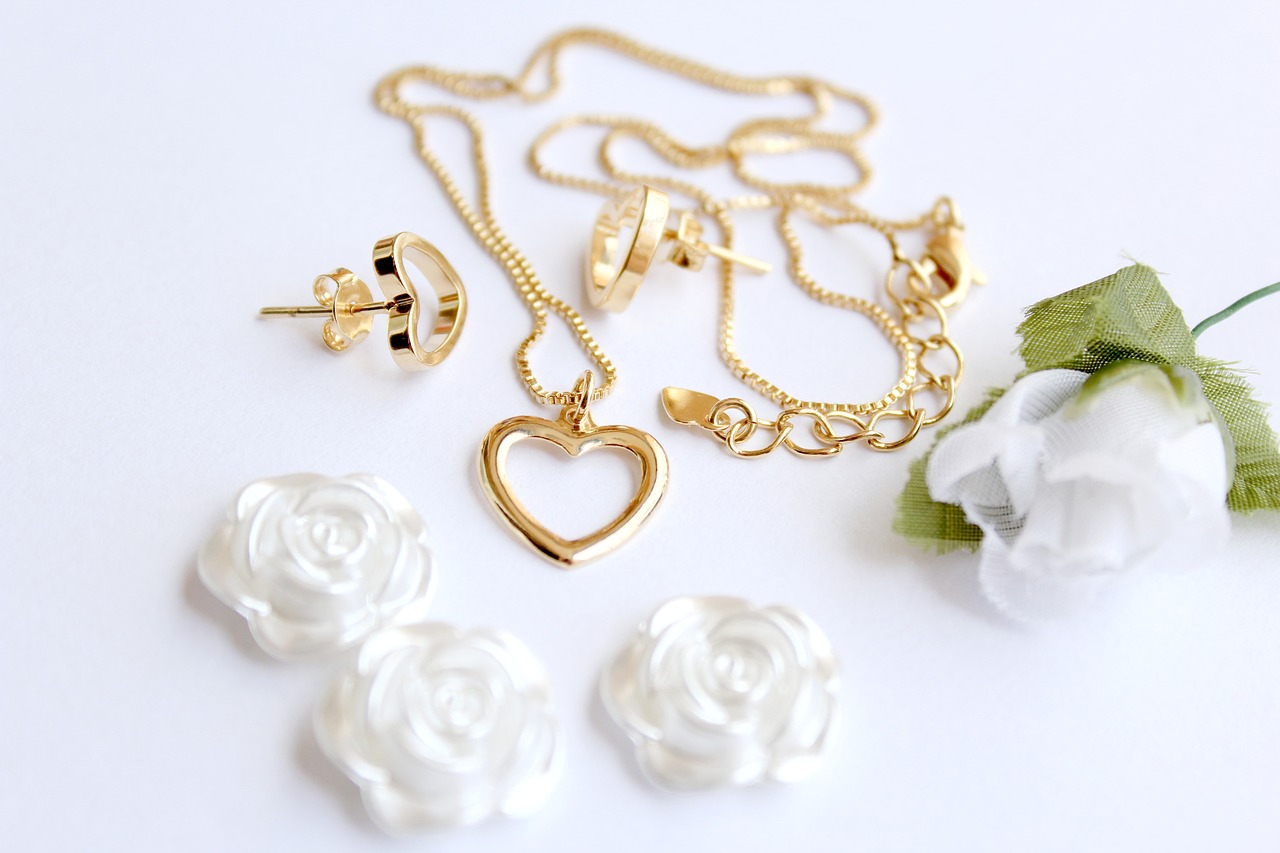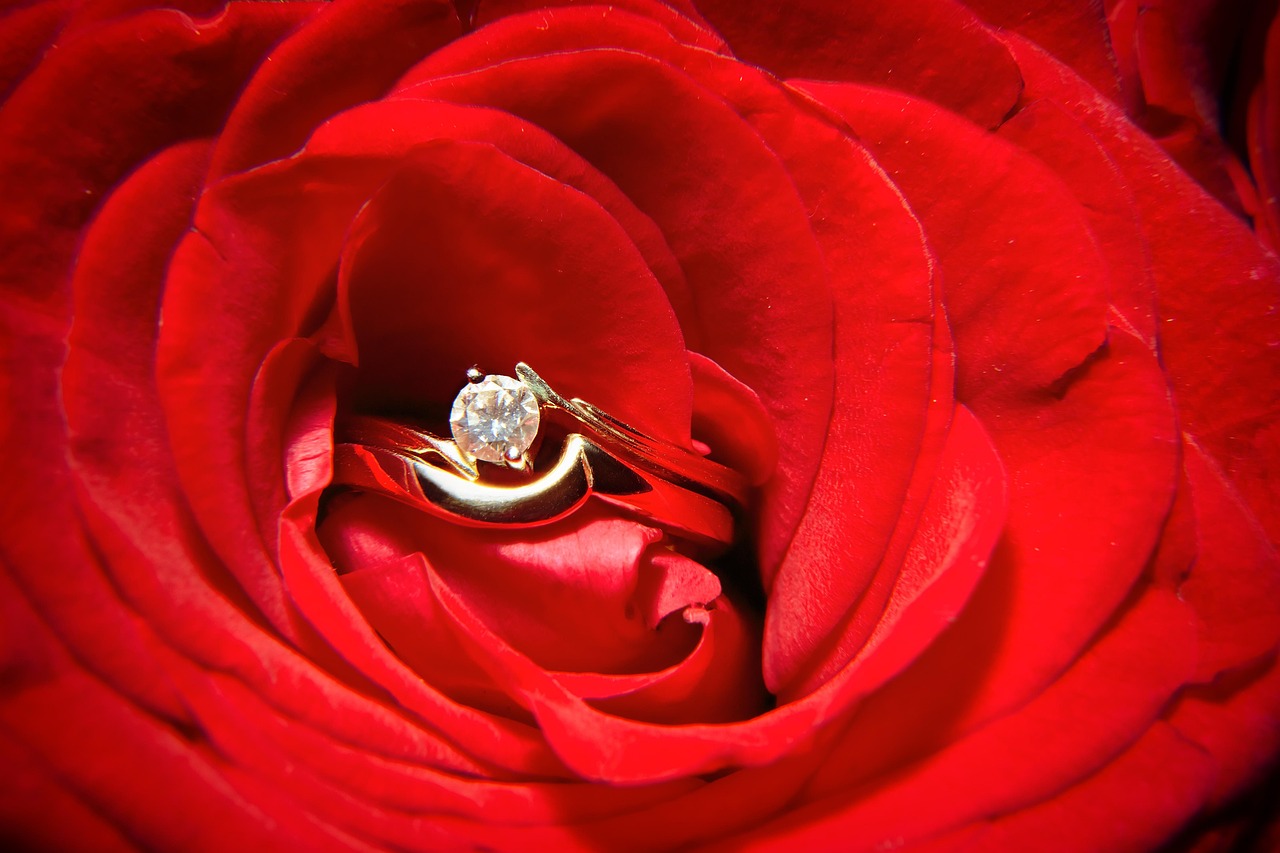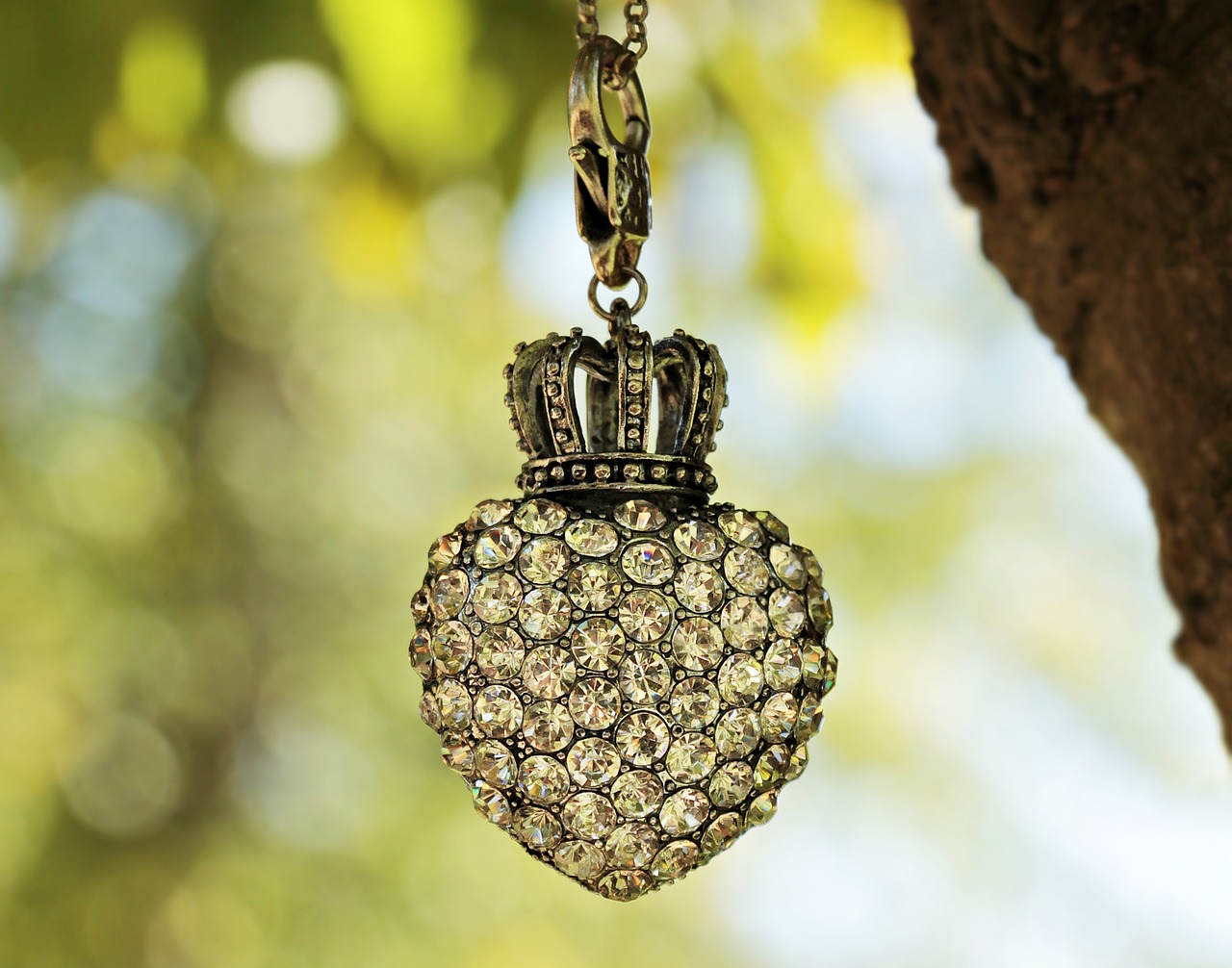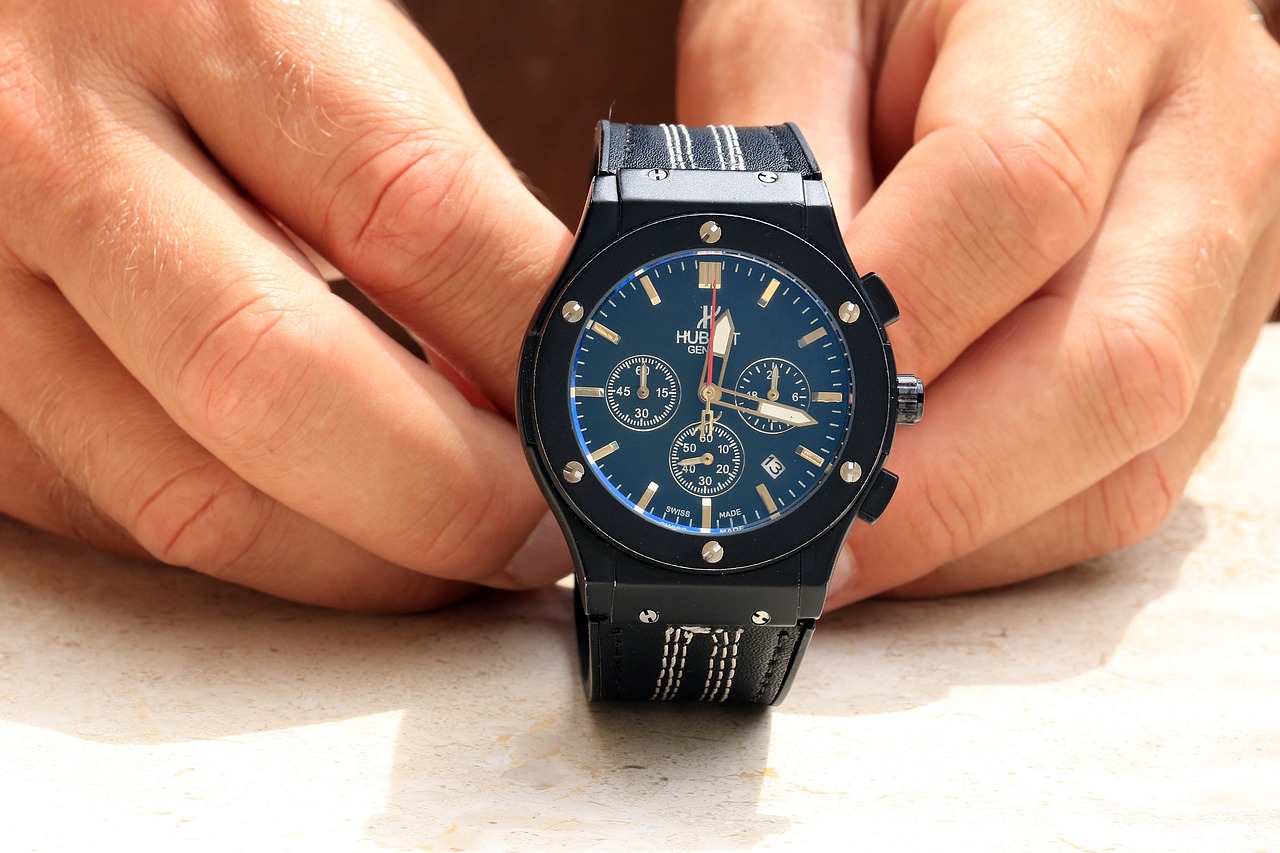This article explores effective strategies and tips to help you safeguard your engagement ring from daily damage, ensuring it remains beautiful and intact for years to come.
Why is Protecting Your Engagement Ring Important?
Understanding the significance of protecting your engagement ring can help you appreciate its value and maintain its beauty over time. Regular care can prevent costly repairs and preserve sentimental value. Your engagement ring is not just a piece of jewelry; it symbolizes love and commitment. Therefore, ensuring its longevity is essential.
What Are the Common Causes of Ring Damage?
Identifying the typical threats to your engagement ring is essential for implementing effective protective measures. Common causes of damage include:
- Scratches: Everyday activities can cause scratches on the surface of your ring.
- Tarnishing: Exposure to chemicals can lead to tarnishing, especially in rings made of certain metals.
- Loose Stones: Regular wear can loosen the settings of your stones, risking loss.
Awareness of these risks can significantly reduce the chance of damage.
How to Clean Your Engagement Ring Safely?
Regular cleaning is vital for maintaining the sparkle of your engagement ring. Safe cleaning methods include:
- Warm Soapy Water: Soak your ring in a solution of mild dish soap and warm water.
- Soft Brush: Use a soft-bristled toothbrush to gently scrub the settings.
- Rinse and Dry: Rinse thoroughly with clean water and dry with a lint-free cloth.
These methods ensure that your ring stays clean without damaging its materials.
Should You Remove Your Ring During Certain Activities?
Knowing when to remove your engagement ring can prevent unnecessary wear. It is wise to take off your ring during:
- Exercise: Sweat and impact can lead to damage.
- Cleaning: Household chemicals can tarnish or scratch your ring.
- Swimming: Chlorine and saltwater can affect the metal and stones.
What Type of Insurance Should You Consider?
Engagement ring insurance can provide peace of mind against theft or loss. Consider options such as:
- Replacement Value Coverage: Covers the cost to replace your ring.
- Agreed Value Coverage: You and the insurer agree on the ring’s value upfront.
Understanding these options can help you choose the best coverage for your needs.
How to Store Your Engagement Ring Properly?
Proper storage is crucial to prevent scratches and damage when your ring is not being worn. Best practices include:
- Individual Boxes: Store each ring in its own box to avoid scratches.
- Soft Pouches: Use soft pouches for additional protection.
What Are the Best Protective Accessories for Rings?
Using protective accessories can help shield your engagement ring from everyday wear. Consider:
- Ring Guards: These can help protect the band from scratches.
- Travel Cases: A secure case for travel can prevent damage.
How Often Should You Have Your Ring Professionally Inspected?
Regular professional inspections can ensure your engagement ring remains in excellent condition. It is recommended to have your ring inspected every six months to a year. During the inspection, a jeweler will check for loose stones and assess the overall condition of the ring.
What Maintenance Tips Can Extend Your Ring’s Lifespan?
Implementing simple maintenance routines can significantly extend the lifespan of your engagement ring. Consider:
- Regular Cleaning: Clean your ring regularly to maintain its sparkle.
- Safe Wearing: Avoid wearing your ring during high-risk activities.
These practical tips will help keep your ring looking stunning for years to come.

Why is Protecting Your Engagement Ring Important?
Engagement rings are not just beautiful pieces of jewelry; they symbolize love, commitment, and cherished memories. Therefore, protecting your engagement ring is crucial not only for its aesthetic appeal but also for its sentimental value. Understanding the importance of safeguarding this precious item can help you appreciate its significance and ensure it remains a treasured part of your life.
Every day, your engagement ring is exposed to various elements that can cause wear and tear. From everyday activities to environmental factors, the risks are numerous. By prioritizing the protection of your engagement ring, you can:
- Preserve its Beauty: Regular care and maintenance keep your ring looking as radiant as the day you received it. A well-cared-for ring retains its shine and brilliance, making it a joy to wear.
- Prevent Costly Repairs: Addressing minor issues early on can save you significant expenses in the long run. For instance, a loose stone may seem trivial, but if not fixed promptly, it could lead to loss or damage.
- Maintain Sentimental Value: Your engagement ring often carries immense emotional significance. Protecting it ensures that it continues to represent your love story for years to come.
- Enhance Longevity: Regular maintenance and protective measures can extend the lifespan of your ring, allowing you to enjoy it for generations.
Moreover, understanding the specific threats your ring faces is essential. Common causes of damage include:
- Scratches: Everyday wear can lead to unsightly scratches on the surface of your ring.
- Tarnishing: Exposure to chemicals and moisture can cause metals to tarnish over time.
- Loose Stones: Regular wear can lead to stones becoming loose, increasing the risk of losing them.
By recognizing these potential hazards, you can take proactive steps to mitigate risks. For example, consider removing your ring during activities such as exercising or cleaning, where it may be exposed to harsh conditions.
Additionally, regular cleaning is vital to maintain your ring’s sparkle. Utilizing safe cleaning methods can help you avoid damaging the materials of your ring. Household items like mild soap and warm water can effectively clean your ring without causing harm.
Lastly, consider investing in engagement ring insurance. This can provide peace of mind against theft or loss, ensuring that you are covered should anything happen to your precious piece.
In conclusion, protecting your engagement ring is an essential aspect of ownership. By understanding its significance and implementing effective care strategies, you can ensure that your ring remains a beautiful and meaningful part of your life for years to come.

What Are the Common Causes of Ring Damage?
When it comes to your engagement ring, understanding the potential threats it faces is crucial for its longevity and beauty. Identifying the common causes of ring damage allows you to take proactive steps to protect this cherished piece of jewelry. Below are the primary threats that can compromise your ring’s integrity and appearance.
- Scratches: Everyday wear and tear can lead to unsightly scratches on the surface of your ring. Activities such as typing on a keyboard, doing household chores, or even bumping against hard surfaces can cause these scratches. To minimize this risk, consider removing your ring during such activities.
- Tarnishing: Rings made from metals like silver or gold can tarnish over time, especially when exposed to moisture, chemicals, or even body oils. Regular cleaning and proper storage can help prevent tarnishing and keep your ring looking its best.
- Loose Stones: Over time, the settings that hold your stones can become loose due to regular wear. This not only diminishes the ring’s aesthetic appeal but also increases the risk of losing precious stones. Regular inspections by a professional jeweler can help catch this issue before it becomes a problem.
- Environmental Factors: Exposure to harsh chemicals, such as those found in cleaning products or swimming pools, can damage your ring. Additionally, extreme temperatures can affect the metal and stones. Always be mindful of your environment and remove your ring when necessary.
- Improper Storage: When not in use, storing your engagement ring improperly can lead to scratches and tangles with other jewelry. Use a soft pouch or a dedicated jewelry box to keep your ring safe.
Being aware of these common causes of ring damage is the first step in protecting your engagement ring. By implementing simple precautions, such as removing your ring during certain activities, cleaning it regularly, and storing it properly, you can significantly reduce the risk of damage. Taking these steps will not only preserve the beauty of your engagement ring but also maintain its sentimental value for years to come.
In summary, protecting your engagement ring from everyday wear is essential. By understanding the typical threats it faces, you can take effective measures to ensure it remains a stunning symbol of your love and commitment.

How to Clean Your Engagement Ring Safely?
Keeping your engagement ring sparkling and beautiful is essential for showcasing its brilliance. Regular cleaning is not only important for aesthetic reasons but also for the longevity of the ring. In this section, we will explore how to clean your engagement ring safely using household items that won’t harm its materials or settings.
Over time, your engagement ring can accumulate dirt, oil, and grime, which can dull its shine. Regular cleaning helps to maintain the ring’s luster and prevents the buildup of residues that could lead to more serious issues, such as tarnishing or stone loosening. By keeping your ring clean, you not only preserve its beauty but also enhance its durability.
Many common household items can effectively clean your engagement ring without causing damage. Here are some safe options:
- Warm Water and Mild Soap: A mixture of warm water and a few drops of mild dish soap is a gentle yet effective cleaning solution. Soak your ring for 20-30 minutes, then use a soft brush to scrub it gently.
- Baking Soda: Create a paste using baking soda and water. Apply it to the ring with a soft cloth or brush, then rinse thoroughly.
- White Vinegar: Soaking your ring in a solution of equal parts white vinegar and water can help remove tarnish and grime. Rinse well afterward.
To ensure your cleaning process is safe and effective, follow these steps:
- Start by preparing your cleaning solution using one of the methods mentioned above.
- Remove your ring and place it in the solution, allowing it to soak for the recommended time.
- Gently scrub the ring using a soft-bristled toothbrush, focusing on areas where dirt may accumulate, such as under the stone.
- Rinse the ring under lukewarm running water to remove any cleaning solution.
- Dry the ring thoroughly with a soft, lint-free cloth to avoid water spots.
While cleaning your engagement ring at home can be effective, there are some practices you should avoid:
- Avoid Harsh Chemicals: Stay away from bleach, ammonia, or other strong chemicals that can damage the metal or stones.
- Do Not Use Abrasive Materials: Avoid scrubbing pads or rough cloths that can scratch the surface of your ring.
- Skip Ultrasonic Cleaners: While these devices can be effective, they may not be safe for all types of stones and settings.
For optimal maintenance, it is recommended to clean your engagement ring every few weeks. However, if you frequently wear it during activities that expose it to dirt and grime, you may need to clean it more often. Regular inspections for loose stones or other damage can also help ensure your ring remains in excellent condition.
By following these cleaning tips and using safe household items, you can keep your engagement ring looking as stunning as the day you received it. Regular care not only enhances its beauty but also helps protect your valuable investment.

Should You Remove Your Ring During Certain Activities?
When it comes to maintaining the beauty and integrity of your engagement ring, understanding when to remove it is crucial. Engagement rings are not just pieces of jewelry; they carry significant sentimental value and represent a commitment. Therefore, safeguarding them from potential damage during daily activities is essential.
Knowing when to remove your engagement ring can prevent unnecessary wear. Certain activities can expose your ring to potential damage, making removal a wise choice. Here are some common scenarios where it is advisable to take off your ring:
- Exercising: Whether you’re hitting the gym, going for a run, or participating in sports, the movement and friction can cause scratches or loosen stones. Additionally, sweat can lead to tarnishing, especially for rings made of less durable metals.
- Cleaning: Household chores often involve harsh chemicals found in cleaning products, which can tarnish or damage your ring’s finish. It’s best to remove your ring before scrubbing surfaces or using strong detergents.
- Swimming: Chlorine in pools and saltwater in the ocean can be harmful to your ring. It can cause discoloration and weaken the metal over time. Consider leaving your ring at home or in a secure place before diving in.
- Gardening: Digging in the dirt can scratch your ring and expose it to soil and other debris, which may get stuck in the setting. Removing your ring while gardening can save it from unnecessary wear and tear.
- Cooking: While preparing meals, the oils and food particles can accumulate on your ring, dulling its shine. Furthermore, the heat from cooking can cause the metal to expand or warp if exposed for too long.
By being mindful of these activities, you can significantly reduce the risk of damaging your engagement ring. If you find it inconvenient to remove your ring each time, consider investing in a ring holder or pouch that you can keep nearby during these activities.
It’s also important to note that even if you choose to keep your ring on, you should regularly inspect it for signs of wear. Look for loose stones, scratches, or discoloration. Regular maintenance can help identify issues before they become significant problems.
In conclusion, while it may feel strange to remove your engagement ring during certain activities, doing so can help preserve its beauty and longevity. By taking these simple precautions, you ensure that your cherished piece remains a stunning symbol of your love for years to come.

What Type of Insurance Should You Consider?
When it comes to protecting your precious engagement ring, insurance is a crucial consideration. The emotional and financial investment in an engagement ring makes it essential to safeguard against unforeseen circumstances such as theft or loss. This section will delve into the various types of insurance options available, helping you make an informed decision that suits your needs.
Engagement rings often hold significant sentimental value as well as monetary worth. In the unfortunate event of loss or theft, having insurance can provide you with peace of mind and financial protection. It ensures that you can replace your ring without incurring a substantial financial burden.
- Homeowner’s or Renter’s Insurance: Many people may not realize that their existing homeowner’s or renter’s insurance may cover personal property, including engagement rings. However, this coverage often comes with limitations and may not fully cover the ring’s value.
- Specialized Jewelry Insurance: This type of insurance is specifically designed for valuable items such as engagement rings. It typically offers comprehensive coverage, including loss, theft, and damage. Specialized jewelry insurance often provides a higher payout and fewer restrictions compared to general property insurance.
- Scheduled Personal Property Endorsement: This option allows you to add your engagement ring as a scheduled item on your homeowner’s or renter’s policy. It provides extra coverage and can protect against specific risks that may not be covered under standard policies.
Choosing the right insurance coverage involves considering several factors:
- Value of Your Ring: Get your ring appraised by a professional to determine its current market value. This will help you select a policy that adequately covers your ring.
- Coverage Options: Compare different policies and their coverage options. Look for policies that cover a wide range of risks, including accidental damage, loss, and theft.
- Deductibles: Understand the deductible amounts. A lower deductible means less out-of-pocket expense when making a claim, but it may also result in higher premiums.
Not all insurance providers are created equal. When selecting a provider, consider the following:
- Reputation: Research the provider’s reputation and customer reviews. Look for companies with a track record of prompt claims processing and excellent customer service.
- Policy Flexibility: Ensure the provider offers flexible policies that can be tailored to your specific needs. You may want options for adding additional items in the future.
- Claim Process: Familiarize yourself with the claim process. Choose a provider that offers a straightforward and efficient claims process.
Once you’ve secured insurance for your engagement ring, it’s essential to maintain your policy:
- Regular Appraisals: As the value of your ring may appreciate over time, schedule regular appraisals to ensure your coverage remains adequate.
- Keep Documentation: Maintain all relevant documents, including appraisals, receipts, and photographs of your ring, to facilitate any future claims.
In summary, engagement ring insurance is a vital aspect of protecting your cherished piece of jewelry. By understanding the different types of coverage available and carefully considering your options, you can ensure that your engagement ring remains a symbol of love and commitment for years to come.

How to Store Your Engagement Ring Properly?
When it comes to your engagement ring, proper storage is essential to maintain its beauty and integrity. Rings can be susceptible to scratches and damage when not worn, so understanding how to store them correctly is crucial. Below, we explore the best practices for keeping your engagement ring safe and secure when it’s not adorning your finger.
Engagement rings are often made from precious metals and feature delicate stones, making them vulnerable to damage. Proper storage helps to prevent scratches, tarnishing, and potential loss of stones. By implementing effective storage techniques, you can ensure that your ring remains in pristine condition for years to come.
- Use a Soft Pouch or Lined Box: Always store your ring in a soft pouch or a jewelry box with a soft lining. This can help to minimize the risk of scratches from other jewelry items.
- Avoid Stacking: If you have multiple rings, avoid stacking them together. Instead, store each ring separately to prevent them from rubbing against one another.
- Keep Away from Humidity: Store your ring in a cool, dry place. Humidity can lead to tarnishing, especially for rings made from silver or other susceptible metals.
- Consider a Safe: For added security, consider storing your engagement ring in a safe. This not only protects it from physical damage but also from theft.
Creating an organized jewelry storage system can make it easier to keep track of your engagement ring and other valuable items. Consider using a designated jewelry box with compartments to separate different pieces. This way, your engagement ring will always have its own space, reducing the risk of misplacement or damage.
- Don’t Leave It Out: Leaving your ring out on a counter or table increases the chances of it being scratched or lost.
- Avoid Extreme Temperatures: Storing your ring in places that experience extreme heat or cold can cause damage to the stones and settings.
- Don’t Use Harsh Chemicals: Avoid storing your ring near cleaning supplies or chemicals, as these can tarnish or damage the metal.
In addition to proper storage, consider scheduling regular professional cleanings and inspections for your engagement ring. This can help identify any potential issues early and keep your ring looking its best. Furthermore, always remember to remove your ring during activities that could expose it to harsh conditions, such as swimming, exercising, or cleaning.
By following these best practices for storing your engagement ring, you can ensure that it remains a cherished symbol of your love and commitment, free from scratches and damage. Your engagement ring deserves the best care, and proper storage is a vital component of that care.
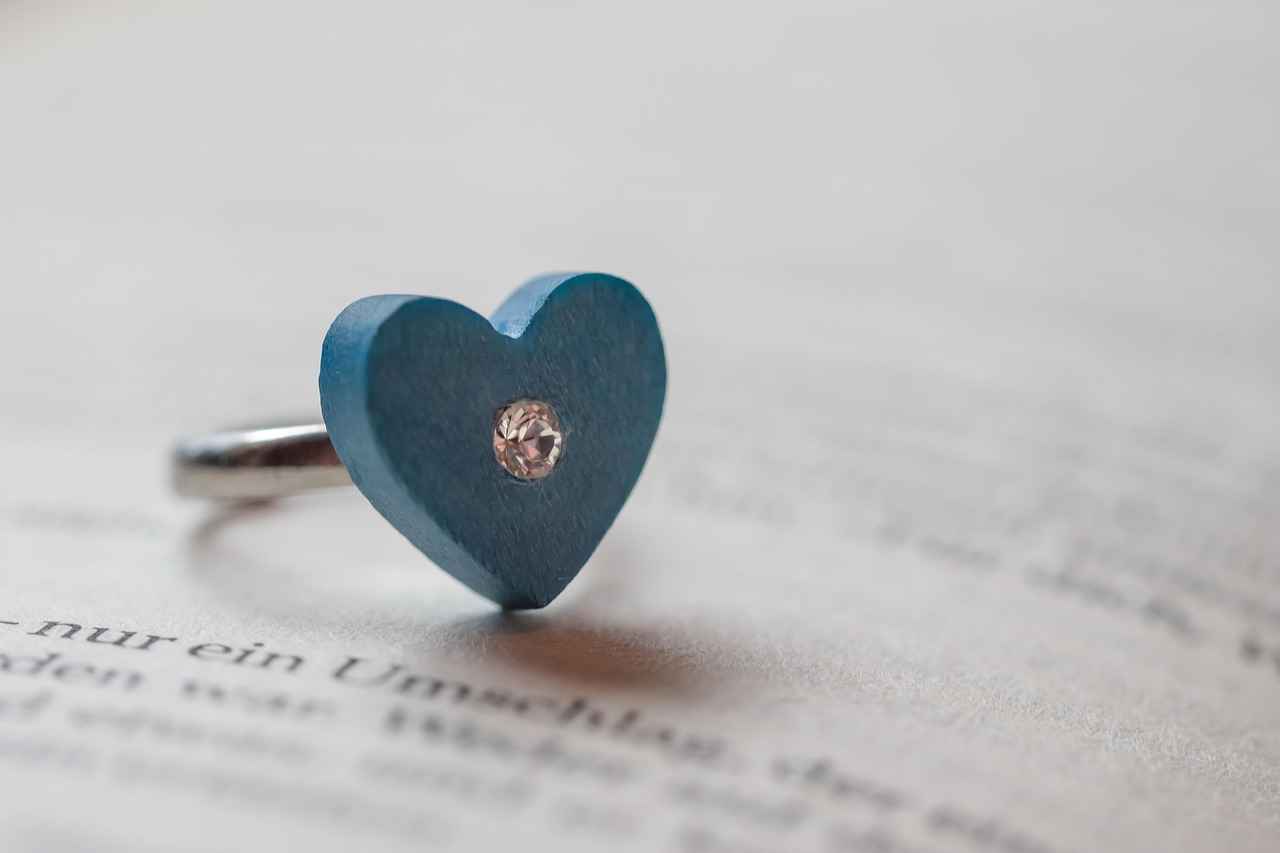
What Are the Best Protective Accessories for Rings?
When it comes to safeguarding your engagement ring, utilizing protective accessories is essential. These accessories not only enhance the durability of your ring but also provide peace of mind against potential damage. In this section, we will explore some of the best protective accessories available, ensuring your ring remains as stunning as the day you received it.
Ring guards are specially designed accessories that provide an additional layer of protection for your engagement ring. They are typically made from durable materials and can be easily slipped onto your ring. The primary function of a ring guard is to prevent scratches and accidental damage during daily activities. By creating a buffer between your ring and potential hazards, ring guards help maintain the integrity of your precious jewelry.
When traveling, your engagement ring can be exposed to various risks, including loss or damage. Investing in a high-quality travel case is a smart choice for any ring owner. These cases are specifically designed to securely hold your ring, protecting it from scratches and environmental factors. Look for cases that offer padding and compartments to keep your ring safe during transit.
Silicone ring protectors are another innovative accessory that has gained popularity in recent years. These flexible, soft rings can be worn alongside your engagement ring to provide additional protection. They are particularly useful for individuals who engage in physical activities or work with their hands frequently. Silicone protectors can help prevent snagging and damage without compromising on style.
Ring spacers are another option worth considering. These are small bands that can be placed between your engagement ring and wedding band to prevent them from rubbing against each other. This not only helps maintain the shine of both rings but also reduces the risk of loose stones and other wear. Spacers can be particularly beneficial for individuals with rings that are prone to shifting.
If your engagement ring features metals that are susceptible to tarnishing, such as silver or white gold, using anti-tarnish pouches can be a game-changer. These pouches are designed to absorb moisture and prevent tarnishing, ensuring your ring retains its original luster. Simply store your ring in an anti-tarnish pouch when not in use to keep it looking pristine.
For those seeking personalized protection, many jewelers offer custom solutions tailored to your specific needs. This could include custom-fit guards or specialized settings designed to enhance the durability of your ring. Consulting with a professional jeweler can provide insights into the best options available for your unique piece.
In conclusion, protecting your engagement ring is crucial for preserving its beauty and value. By utilizing protective accessories such as ring guards, travel cases, silicone protectors, and more, you can significantly reduce the risk of damage. Always consider your lifestyle and daily activities when choosing the right protective measures, ensuring your cherished ring remains safe for years to come.
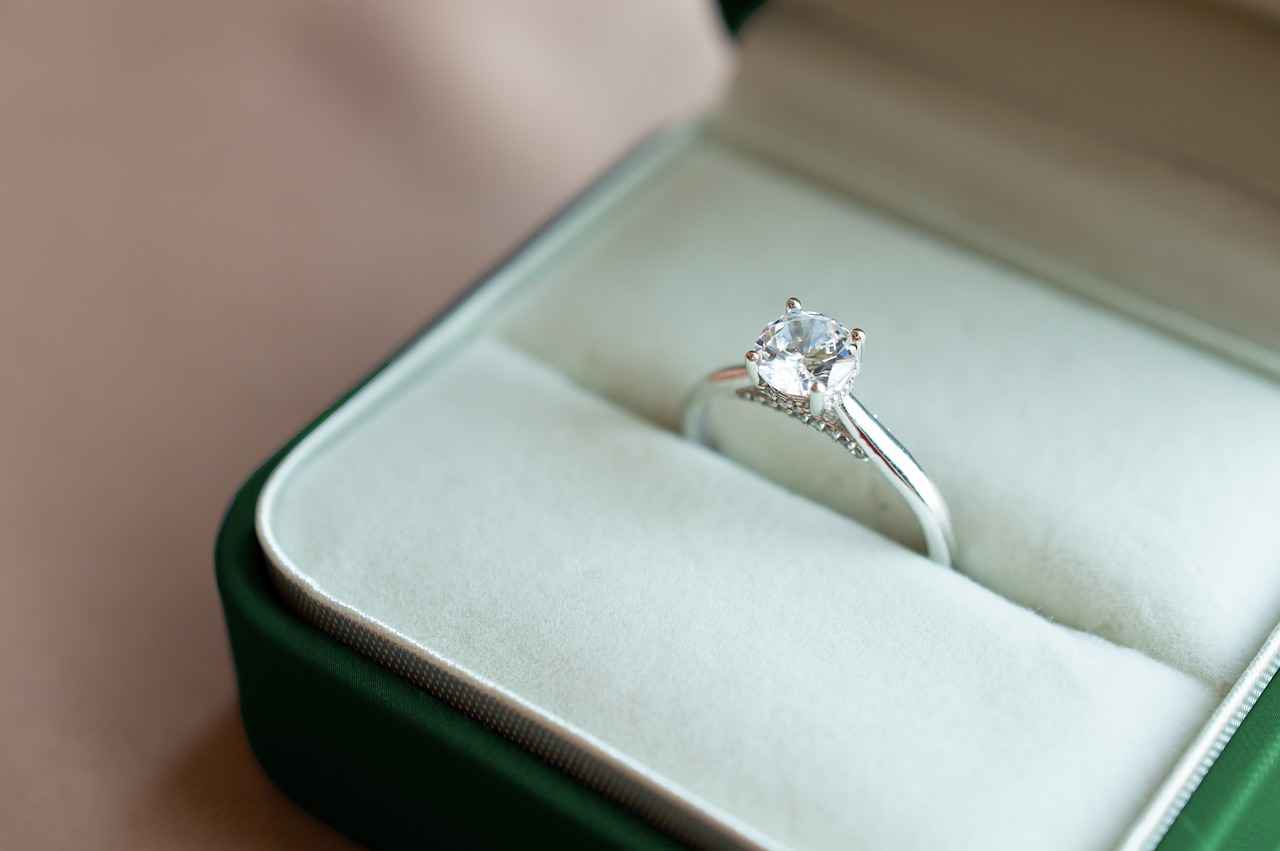
How Often Should You Have Your Ring Professionally Inspected?
When it comes to maintaining the beauty and integrity of your engagement ring, regular professional inspections play a crucial role. These inspections not only help in identifying potential issues before they escalate, but they also ensure that your ring remains a symbol of love and commitment for years to come. In this section, we will explore the recommended frequency for these inspections and what you can expect during the process.
Engagement rings, often adorned with precious stones and metals, are susceptible to wear and tear from daily activities. Regular inspections help in:
- Identifying Loose Stones: Over time, settings can become loose, increasing the risk of losing a precious stone.
- Checking for Scratches: Wearing your ring daily can lead to scratches on the band or the stones, affecting its appearance.
- Assessing Metal Integrity: Metals can weaken or tarnish, especially if exposed to harsh chemicals.
Experts recommend having your engagement ring professionally inspected at least once every six months. However, if you wear your ring daily or engage in activities that may increase wear, consider scheduling inspections every three to four months. This frequency allows for timely detection and repair of any issues.
During a professional inspection, a jeweler will conduct several checks:
- Visual Examination: A thorough look at the ring to spot any visible signs of damage.
- Stone Security Check: Ensuring that all stones are securely set and assessing the condition of the prongs.
- Cleaning: Many jewelers offer a complimentary cleaning service during inspections, which can enhance the ring’s sparkle.
- Assessment of Metal Condition: Checking for any signs of wear, such as thinning bands or scratches.
Before heading to the jeweler, consider the following tips:
- Clean Your Ring: A quick clean at home can help the jeweler see any hidden issues better.
- List Concerns: If you have noticed any specific issues, jot them down to discuss with the jeweler.
- Insurance Documentation: Ensure you have your insurance information handy, as some jewelers may require it for repairs.
If your jeweler identifies issues during the inspection, they will typically provide recommendations for repairs. Common repairs include:
- Re-tipping Prongs: Strengthening the prongs that hold the stones.
- Polishing: Restoring the shine to the metal.
- Stone Replacement: If a stone is lost, they can help source a replacement.
Investing in regular professional inspections is not just about maintaining the ring’s appearance; it’s about preserving its sentimental value and ensuring it lasts a lifetime. By adhering to a schedule of inspections, you can rest assured that your engagement ring remains a timeless symbol of your love.

What Maintenance Tips Can Extend Your Ring’s Lifespan?
Engagement rings symbolize love and commitment, but they also require care to maintain their beauty and integrity. Implementing simple maintenance routines can significantly extend the lifespan of your engagement ring. Below are practical tips that will help keep your ring looking stunning for years to come.
Regular maintenance not only preserves the visual appeal of your ring but also protects its structural integrity. Over time, exposure to dirt, oils, and environmental factors can dull its shine and even loosen settings. By adopting a few simple practices, you can keep your ring in pristine condition.
- Use Mild Soap and Water: Mix a few drops of dish soap in warm water. Soak your ring for about 20-30 minutes, then gently scrub with a soft toothbrush.
- Avoid Harsh Chemicals: Stay away from bleach or ammonia-based cleaners as they can damage the metal and stones.
- Dry Thoroughly: After cleaning, dry your ring with a soft, lint-free cloth to avoid water spots.
Knowing when to take off your engagement ring can prevent unnecessary wear. Consider removing your ring during:
- Household Chores: Activities like washing dishes or cleaning can expose your ring to harsh chemicals.
- Exercise: Sweating and contact with gym equipment can lead to scratches and even loss.
- Swimming: Chlorine in pools can damage certain metals and weaken settings.
Proper storage is crucial when your ring is not being worn:
- Use a Soft Pouch: Store your ring in a soft pouch or a dedicated jewelry box to avoid scratches.
- Avoid Stacking: Keep your engagement ring separate from other jewelry to prevent tangling and scratching.
Regular professional inspections are vital. Experts recommend having your ring checked at least once a year. During these inspections, jewelers can:
- Check for Loose Stones: They will ensure that all stones are secure and recommend tightening if necessary.
- Assess Metal Condition: Jewelers can identify any signs of wear or damage that may need repair.
Consider using protective accessories to enhance your ring’s durability:
- Ring Guards: These can help prevent your ring from spinning on your finger and reduce wear on the band.
- Travel Cases: If you’re traveling, invest in a padded travel case to keep your ring safe and secure.
Beyond cleaning and inspections, consider these additional tips:
- Limit Exposure to Harsh Environments: Keep your ring away from extreme temperatures and humidity.
- Regularly Rotate Your Ring: If your ring has a unique design, rotating it can help distribute wear evenly.
By following these maintenance tips, you can ensure that your engagement ring remains a timeless symbol of your love, sparkling beautifully for years to come. Remember, a little care goes a long way in preserving the charm and value of your cherished piece.
Frequently Asked Questions
- How can I prevent scratches on my engagement ring?
To prevent scratches, always remove your ring during activities like cleaning, exercising, or any manual work. Consider using a ring guard for added protection when you’re not wearing it.
- What household items can I use to clean my engagement ring?
You can safely clean your ring using a mixture of warm water and mild dish soap. Use a soft toothbrush to gently scrub it, ensuring you reach all the nooks and crannies.
- Is it necessary to have my engagement ring insured?
Yes! Insuring your engagement ring provides peace of mind against theft or loss. It’s a small price to pay for protecting such a valuable and sentimental piece.
- How often should I get my ring professionally inspected?
It’s recommended to have your engagement ring professionally inspected at least once a year. This helps catch any issues early, ensuring your ring stays in top shape.
- What is the best way to store my engagement ring?
Store your engagement ring in a soft pouch or a dedicated jewelry box to prevent scratches. Avoid placing it in direct sunlight, as this can damage certain stones over time.

